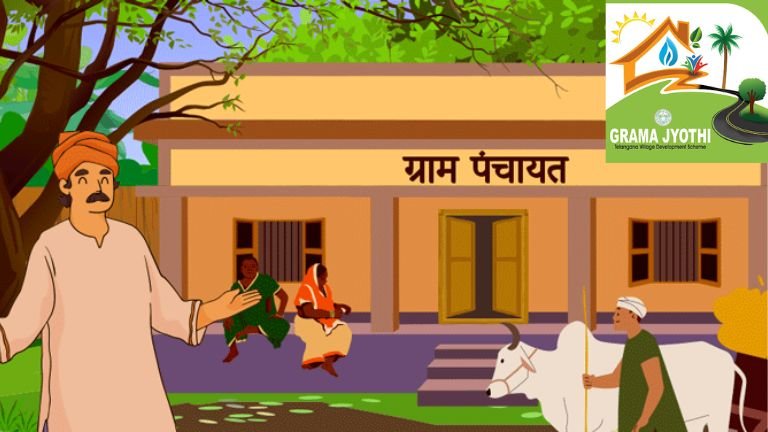How to Check Gram Panchayat Schemes, Beneficiary List, Income & Expenditure Online (2025 Guide)
India’s rural development hinges on the efficient functioning and transparency of Gram Panchayats, the most grassroots level of governance in the country. From implementing government schemes to managing local development, Gram Panchayats play a vital role in improving village life.
With the rise of digital platforms, citizens now have the power to access crucial information—such as scheme details, beneficiary lists, income and expenditure statements—directly online. This guide explains how you can easily verify such data through key government portals like eGramSwaraj, AwaasSoft, and NREGA.
What is a Gram Panchayat?
A Gram Panchayat is the basic unit of local self-government in rural India, typically responsible for a single village or a group of villages. It oversees the planning and execution of welfare schemes related to:
-
Housing
-
Employment (e.g., MGNREGA)
-
Sanitation
-
Water supply
-
Roads and infrastructure
-
Welfare subsidies
The Ministry of Panchayati Raj has made it mandatory for Panchayats to regularly update their development plans, fund usage, and beneficiary data on dedicated portals to ensure transparency and accountability.
Why Should You Check Gram Panchayat Data Online?
Accessing Panchayat-related information online helps you:
-
Track scheme progress (e.g., PMAY-G, MGNREGA, Swachh Bharat)
-
Verify your name in beneficiary lists
-
Monitor funds received and spent by your Panchayat
-
Report fraud, favoritism, or delays
-
Understand development priorities in your village
Key Government Portals to Access Panchayat Data
| Portal | Purpose |
|---|---|
| eGramSwaraj | Planning, budgeting, implementation reports of Panchayats |
| AwaasSoft | PMAY-G rural housing scheme data |
| NREGA Portal | Job cards, wages, and MGNREGA work progress |
| PlanPlus | Panchayat development and planning reports |
| Panchayat.gov.in | Overview of Panchayati Raj institutions and updates |
How to Check Panchayat Schemes and Financial Records (Step-by-Step)
1. eGramSwaraj Portal – Complete Panchayat Reports
Steps to access:
-
Visit: https://egramswaraj.gov.in
-
Click on “Reports”
-
Choose your State → District → Block → Gram Panchayat
-
Click “Get Report”
You’ll find:
-
Approved annual plans and scheme lists
-
Budget allocation from state/central governments
-
Payments and expenditure details
-
Completed and ongoing works
-
Infrastructure/assets created under schemes
2. AwaasSoft Portal – Rural Housing (PMAY-G)
Visit: https://awaassoft.nic.in
Check details like:
-
Beneficiary name and sanction ID
-
Stage of construction: Not Started, In Progress, Completed
-
Installment-wise payment details
Why it’s useful:
-
Confirm your PMAY-G application status
-
Track when and how much money has been released
3. NREGA Portal – Employment & Wage Data
Visit: https://nrega.nic.in
Steps:
-
Click on “Job Cards”
-
Select State → District → Block → Panchayat
-
Click “Submit”
You can:
-
View issued job cards in your village
-
Track number of workdays for each beneficiary
-
View wage payments and work site details
-
Prevent wage fraud and unauthorized entries
4. PlanPlus Portal – Panchayat Development Planning
Visit: https://planplus.nic.in
Features:
-
View annual Panchayat development plans
-
Sector-wise fund allocation
-
Physical and financial progress reports
This portal helps you understand what projects are planned and their current implementation status.
5. eGramSwaraj – Income & Expenditure Details
Still on the eGramSwaraj Portal:
To check financial reports:
-
Click “Financial Progress”
-
Select your location
-
View:
-
Total income (central/state funds, grants, taxes)
-
Expense heads (roads, water, education, sanitation)
-
Comparison of planned vs actual expenditures
-
Other Ways to Stay Informed
A. Use the RTI (Right to Information) Act
If information is unavailable or unclear online:
-
File an RTI application to your Panchayat Development Officer (PDO).
-
Request:
-
Scheme-wise beneficiary lists
-
Yearly income/expenditure statements
-
Utilization certificates of funds
-
RTI replies are legally mandated within 30 days.
B. Participate in Gram Sabha Meetings
Gram Sabha is the ideal platform to raise questions:
-
Ask for transparency in fund usage
-
Demand public display of work progress
-
Report favoritism, delays, or mismanagement
-
These meetings are open to all villagers
Major Government Schemes Handled by Panchayats
-
PMAY-G – Affordable rural housing
-
MGNREGA – Guaranteed rural employment
-
SBM-G – Sanitation and toilet construction
-
Jal Jeevan Mission – Tap water to every home
-
NSAP – Pensions for senior citizens, disabled, and widows
-
PMGSY – Rural road connectivity
-
Subsidies – Agriculture, animal husbandry, solar panels, etc.
What to Do If You Notice Discrepancies?
If you find errors in data, missing names, or misuse of funds:
-
Visit your Gram Panchayat Office and raise a concern
-
Submit a written complaint in the complaint box
-
Bring it up during the next Gram Sabha
-
File an RTI or an online grievance through your state’s rural development portal
Tips for Citizens
-
Link your Aadhaar, mobile number, and ration card to access benefits
-
Keep copies of your job card, PMAY ID, beneficiary IDs
-
Regularly check Panchayat notice boards or join local WhatsApp groups
-
Encourage your Panchayat officials to update online portals regularly
APPLY LINK
👉 Click Here to Access eGramSwaraj and Other Portals
Final Thoughts
With the digitalization of rural governance, accessing Gram Panchayat data has become easier than ever. Whether you’re verifying your inclusion in a welfare scheme or tracking fund usage in your village, these online tools help empower citizens and ensure transparent development.
Stay informed. Stay involved. Strengthen your Panchayat.
